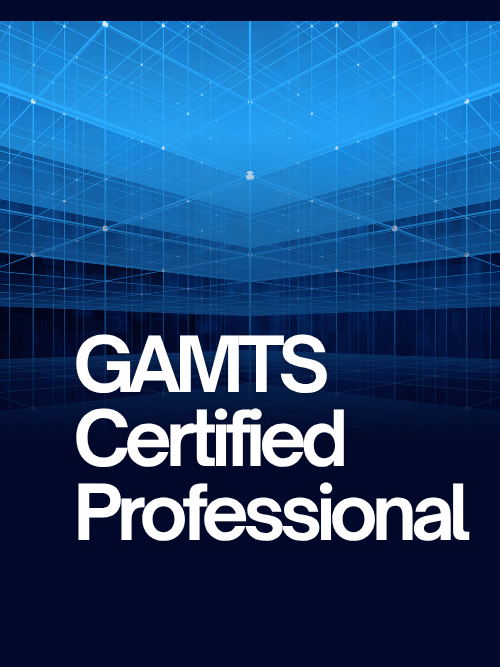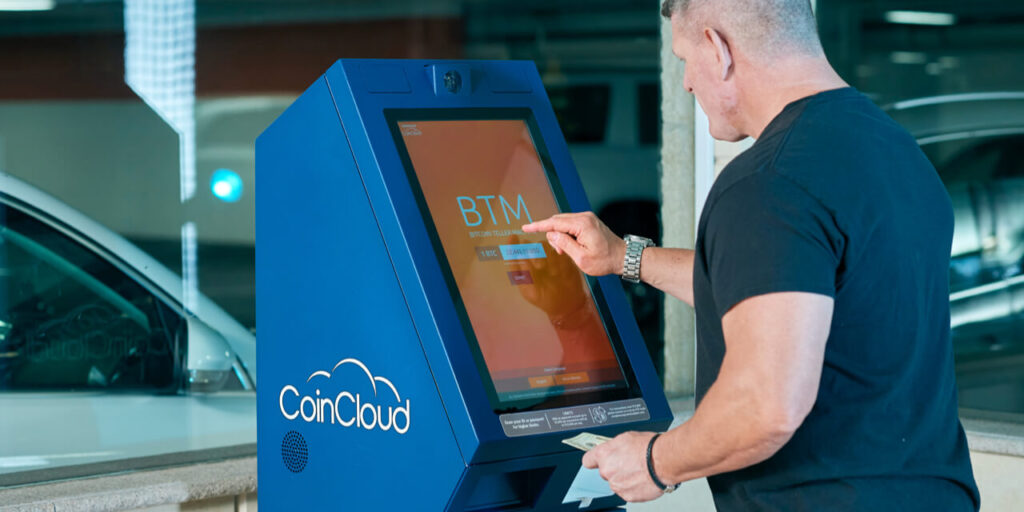GAMTS Certified Cloud Security Architect (GMCS)
Schedule Exam Secure the Future of Cloud Technologies
Overview
What is GMCS Cerificate
The GAMTS Certified Cloud Security Architect (GMCS) is a premier, lifetime-valid credential for professionals specializing in cloud security architecture, risk management, and compliance. As an independent, vendor-neutral global certification authority, GAMTS validates your advanced skills in designing robust cloud security strategies across public, private, and hybrid environments. This certification empowers you to lead, architect, and manage enterprise-grade cloud security solutions aligned with international frameworks and regulatory standards.
Curriculum
Complete Study Syllabus
1.1 Cloud Computing Models & Security Implications (5%)
IaaS (Infrastructure as a Service) security models and responsibilities
PaaS (Platform as a Service) security considerations and controls
SaaS (Software as a Service) security in multi-tenant environments
Public, private, hybrid, and community cloud security models
Shared responsibility model and division of security duties
Cloud deployment architecture patterns and security design
1.2 Cloud Security Frameworks & Standards (6%)
ISO/IEC 27017 (Information security in cloud computing) requirements
ISO/IEC 27018 (Privacy in cloud computing) compliance
NIST SP 800-53 (Security and Privacy Controls) cloud mapping
CIS Cloud Security Best Practices and benchmarks
Cloud Security Alliance (CSA) guidance and frameworks
SOC 2 compliance and auditing frameworks
GDPR and privacy implications in cloud environments
1.3 Cloud Service Provider Security (4%)
AWS security architecture and capabilities overview
Azure security features and compliance
Google Cloud Platform (GCP) security offerings
Vendor-neutral multi-cloud security considerations
Cloud service provider certifications and attestations
Evaluating cloud provider security posture
1.4 Cloud Architecture for Security (3%)
Secure cloud reference architectures
Defense-in-depth strategies for cloud
Network segmentation in cloud environments
Cloud perimeter and boundary security concepts
Secure design patterns for cloud applications
2.1 Cloud IAM Fundamentals
Identity federation and trust models in cloud
Single Sign-On (SSO) and federated identity management
OAuth 2.0 and OpenID Connect protocols
SAML 2.0 assertions and federated authentication
Multi-factor authentication (MFA) in cloud environments
Authentication vs. authorization in cloud contexts
2.2 Cloud Directory & Identity Services
Azure Active Directory (Azure AD) architecture and capabilities
AWS IAM (Identity and Access Management) design patterns
Google Cloud Identity and access management
LDAP and Lightweight Directory Access Protocol integration
Cloud directory synchronization and hybrid identity
Identity governance and lifecycle management
2.3 Access Control & Authorization
Role-Based Access Control (RBAC) in cloud platforms
Attribute-Based Access Control (ABAC) in cloud
Cloud IAM policy design and least privilege implementation
Service accounts and privileged access management (PAM)
Cross-cloud access management and federation
Just-In-Time (JIT) and Just-Enough-Privilege (JEP) access models
2.4 Privileged Access Management in Cloud
PAM in cloud-native and hybrid environments
Secrets management and key management services
Credential rotation and lifecycle management
Privileged session management and monitoring
Emergency access and break-glass procedures
Audit trails for privileged access
3.1 Cloud Data Classification & Handling
Data classification frameworks for cloud
Sensitive data identification and tagging
Data retention and lifecycle policies
Cloud storage types and security implications
Data disposal and secure deletion in cloud
Data residency and sovereignty requirements
3.2 Encryption in Cloud
Encryption in transit (TLS/SSL) for cloud communications
Encryption at rest for cloud storage and databases
Client-side encryption vs. server-side encryption
Key management services (KMS) in cloud platforms
Hardware security modules (HSM) in cloud
Encryption key rotation and lifecycle
Homomorphic and format-preserving encryption in cloud contexts
3.3 Cloud Database Security
Database encryption and transparent data encryption (TDE)
Row-level and column-level security in cloud databases
Backup and recovery security
Database activity monitoring (DAM) in cloud
SQL injection and injection attack prevention
Cloud database compliance and audit capabilities
3.4 Data Privacy & Regulatory Compliance
GDPR requirements and cloud implications
CCPA (California Consumer Privacy Act) compliance
HIPAA compliance for healthcare cloud
PCI-DSS compliance for payment data
Local data protection regulations by region
Privacy impact assessments (PIA) for cloud
Data processing agreements (DPA) and contracts
4.1 Secure Cloud Application Development
Secure software development lifecycle (SDLC) for cloud
OWASP Top 10 and cloud application vulnerabilities
API security in cloud environments
Microservices security and container security
Serverless security and function-as-a-service (FaaS) security
Infrastructure-as-Code (IaC) security and policy as code
4.2 Container & Kubernetes Security
Docker container security best practices
Kubernetes security architecture and controls
Container image scanning and vulnerability management
Container registry security and access control
Runtime container monitoring and detection
Orchestration platform security
4.3 Workload Protection & Segmentation
Workload segmentation and microsegmentation
Virtual machine security and hardening
Bare-metal server security in cloud
Workload isolation and performance considerations
Workload firewall rules and network policies
Application security groups (ASGs) and security controls
4.4 Compliance Monitoring & Automation
Continuous compliance monitoring in cloud
Cloud configuration management and compliance
Security automation and remediation workflows
Compliance as code frameworks
Automated policy enforcement and governance
Audit logging and forensics for applications
5.1 Cloud Network Architecture & Security
Virtual Private Cloud (VPC) design and segmentation
Subnets, security groups, and network ACLs
Cloud network routing and traffic control
Network topology for multi-cloud environments
Cloud DMZ and edge network security
Software-defined networking (SDN) in cloud
5.2 Perimeter Security & DDoS Protection
Web Application Firewalls (WAF) in cloud
Network firewalls and stateful inspection
DDoS mitigation and protection services
API gateway security
Load balancer security and SSL/TLS termination
DNS security and DNSSEC in cloud
5.3 VPN & Secure Connectivity
Site-to-site VPN for hybrid cloud security
Client-to-cloud VPN and remote access
IPsec and SSL/TLS VPN in cloud contexts
ExpressRoute (Azure), Direct Connect (AWS), Interconnect (GCP)
Secure cloud interconnect for private connectivity
Redundancy and failover in VPN configurations
5.4 Zero Trust & Segmentation
Zero Trust network architecture in cloud
Continuous verification and authentication
Microsegmentation and policy enforcement
Network segmentation tools and technologies
Behavioral analysis and anomaly detection
Identity-based perimeter defense
6.1 Incident Response Planning in Cloud
Cloud incident response procedures and playbooks
Incident detection, investigation, and containment
Forensic analysis in cloud environments
Evidence preservation and chain of custody
Communication and escalation procedures
Post-incident analysis and lessons learned
6.2 Cloud Forensics & Artifact Collection
Cloud audit logs and forensic analysis
Log retention and long-term storage
Volatile data collection in cloud instances
Non-repudiation and integrity verification
Multi-tenant forensics challenges
Vendor-specific forensic tools and APIs
6.3 Business Continuity & Disaster Recovery
Recovery objectives (RTO, RPO, WRT) in cloud
Backup strategies and backup security in cloud
Disaster recovery site selection and configuration
Failover and failback procedures
Testing and validating recovery procedures
Ransomware recovery and protection strategies
7.1 Cloud Security Governance
Cloud governance frameworks and policies
Cloud security committee and decision-making
Role-based governance and accountability
Third-party risk management in cloud
Cloud vendor management and contracts
Service level agreements (SLAs) and security clauses
7.2 Risk Management in Cloud
Cloud risk assessment methodologies
Risk appetite and tolerance in cloud adoption
Vendor risk and concentrations of risk
Technology risk in cloud infrastructure
Operational risk in cloud environments
Risk monitoring and reporting
7.3 Cloud Compliance & Auditing
Cloud compliance assessments and audits
Internal and external audit procedures
Cloud security testing and vulnerability assessments
Penetration testing in cloud (with approval)
Compliance reporting and evidence collection
Continuous compliance monitoring
8.1 Advanced Cloud Threats & Attacks
Cloud-specific attack vectors and threats
Account compromise and lateral movement
Supply chain attacks in cloud
Insecure APIs and cloud misconfigurations
Insider threats in cloud environments
Advanced persistent threats (APTs) in cloud
8.2 Cloud Security Innovation & Future
Artificial Intelligence and machine learning in cloud security
Quantum computing implications for cloud encryption
Serverless security evolution
Edge computing and cloud security
Emerging cloud security technologies
Security trends and industry evolution
8.3 Vendor-Specific Advanced Features
AWS security advanced features (GuardDuty, Security Hub, etc.)
Azure advanced threat protection
GCP security and threat intelligence
Multi-cloud security orchestration
Vendor-specific automation and response
9.1 Cloud Architecture Scenarios
Design scenarios requiring security trade-offs
Multi-cloud architecture security decisions
Hybrid cloud integration challenges
Cost vs. security optimization scenarios
9.2 Incident & Crisis Management Scenarios
Cloud breach response scenarios
Disaster recovery decision-making
Forensic investigation in cloud
Business continuity planning scenarios
9.3 Strategic Decision-Making
Vendor selection and evaluation
Risk-based prioritization decisions
Compliance and regulatory decision scenarios
Cloud strategy and roadmap decisions
Continuous Updates: Curriculum and study guide updated annually to meet market changes
Audience
Target Audience
- Experienced cloud architects and consultants
- Cybersecurity professionals (5+ years in IT/cloud security)
- IT managers/directors responsible for cloud migration, governance, or risk
- Security professionals overseeing hybrid, multi-cloud deployments
- Solution architects aiming for career advancement in cloud security
Exam Pattern
Process
To maintain the integrity and quality of GAMTS certifications, purchasing the Official Study Guide + Exam Voucher Bundle is mandatory.
-
Step 1
Purchase Bundle
Buy the Official GMCS Study Guide + Exam Voucher Bundle on this page. Instant download of study materials and exam voucher to your GAMTS account. -
Step 2
Prepare & Write Exam
Use the comprehensive guide to prepare at your own pace (no training sessions required). Complete the 3-hour online exam from any location with secure proctoring. -
Step 3
Receive Results & Certificate
Upon passing, receive your GMCS certificate instantly via email.
Ready to Certify?
Apply for certification Have Questions? Contact our certification advisors at certifications@gamts.org.
Insights/Resources
Expert insight and analysis on the latest trends.
3 Common Mistakes in Cyber Risk Quantification (And How to Avoid Them)
How a CCRS Certified Professional Reduced Cyber Insurance Premiums by 35%
PayPal launches PYUSD stablecoin for payments and transfers
Revolutionizing the Future of Financial Services
Testimonial
“The GMCS credential empowered me to lead global cloud security transformations. The vendor-neutral approach makes it stand out internationally.”
— Fatima Ahmed, Cloud Security Director, UAE
Career Acceleration: Secure promotions, specialized roles, and leadership opportunities
Benefits & Industry Value
Independent & Vendor-Neutral
We certify your skills, not products. GAMTS has no affiliation with any technology vendor, ensuring impartial, objective standards that remain valuable across all platforms and technologies.
Lifetime Validity – No Renewal Fees
Your GAMTS certification is valid for life. No recurring costs, no expiration dates, no mandatory renewals. Your achievement is recognized forever.
Global Recognition – 50+ Countries
GAMTS certifications are trusted by enterprises, governments, and regulators worldwide. Your credential opens doors across continents.
Rigorous, Transparent Standards
Our certification standards are developed by subject matter experts, industry bodies, and global frameworks (NIST, ISO, IEEE). Integrity is non-negotiable.
Self-Paced, Flexible Learning
No mandatory training. No fixed schedules. Study at your own pace using our comprehensive official materials. Exam available 24/7, whenever you're ready.
Affordable, Transparent Pricing
One-time bundle purchase covers study guide and unlimited exam attempts within 12 months. No hidden fees, no surprise costs, no renewal traps.
Career Advancement & Higher Compensation
GAMTS-certified professionals report average salary increases of 35% and career advancement to leadership roles within 12-24 months.
Nonprofit Mission – Your Success Matters
GAMTS is nonprofit. We reinvest all proceeds into better standards, research, and candidate support—not shareholder profits. Your certification funds excellence.
Join 10,000+ certified professionals committed to ethical practice, continuous learning, and industry excellence. Network, collaborate, grow.
FAQs About GMCS Certificate
At least 5 years professional IT/cloud security experience recommended.
No formal training—GAMTS provides the only official study guide and exam. Self-paced study is required.
GMCS is lifetime-valid; no renewal fees, no expiration.
GMCR is valid for life—no renewals, no fees, no expiration.
Yes. Trusted by major employers and government regulators globally.






